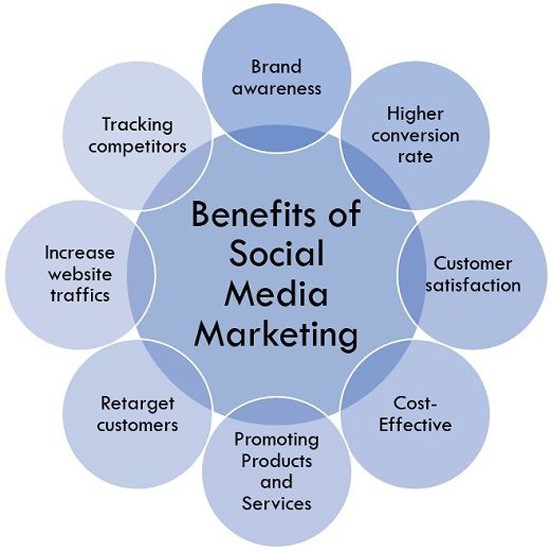Introduction:
In today’s digital age, the significance of social media advertising cannot be overstated. With billions of users active on various platforms every day, social media has become a powerhouse for businesses looking to expand their reach, engage with their audience, and drive sales. In this blog, we’ll delve into the immense potential that social media advertising holds for businesses of all sizes, exploring its benefits, strategies, and best practices.
Understanding Social Media Advertising:
Understanding Social Media Advertising is pivotal for any modern business aiming to thrive in today’s digital landscape. It encompasses the strategic use of various social media platforms to promote products or services, engage with target audiences, and drive desired actions such as purchases or brand awareness. This form of advertising leverages the vast user base and advanced targeting capabilities offered by platforms like Facebook, Instagram, Twitter, LinkedIn, and others, allowing businesses to reach specific demographics with precision. Through compelling content, targeted advertisements, and strategic campaigns, social media advertising enables businesses to build brand loyalty, increase website traffic, generate leads, and ultimately boost sales in an increasingly competitive online market.

Defining Social Media Advertising:
Social media advertising refers to the process of creating and deploying targeted advertisements on social media platforms such as Facebook, Instagram, Twitter, LinkedIn, and more.
The Rise of Social Media Advertising:
Explore the exponential growth of social media platforms and how they’ve transformed into lucrative advertising channels. Discuss statistics highlighting the increasing adoption of social media advertising by businesses worldwide.
Benefits of Social Media Advertising:
Social Media Advertising offers a multitude of benefits for businesses seeking to expand their reach and achieve tangible results in the digital realm. Firstly, it provides unparalleled targeting options, allowing advertisers to reach highly specific demographics based on factors such as age, location, interests, and behavior, maximizing the efficiency of ad spend. Moreover, social media platforms offer robust analytics and reporting tools, providing valuable insights into campaign performance and audience engagement, facilitating data-driven decision-making and optimization. Additionally, social media advertising fosters direct interaction with customers, enabling real-time feedback, customer support, and relationship building, enhancing brand credibility and loyalty. Furthermore, it offers a cost-effective solution compared to traditional advertising channels, with flexible budgeting options and the potential for significant return on investment (ROI). Overall, social media advertising empowers businesses to amplify their online presence, drive traffic, generate leads, and ultimately, achieve their marketing objectives in an increasingly competitive digital landscape.
Enhanced Targeting Capabilities:
Explain how social media platforms offer advanced targeting options based on demographics, interests, behaviors, and more, allowing businesses to reach their ideal audience effectively.
Cost-Effectiveness:
Discuss the cost advantages of social media advertising compared to traditional advertising channels, emphasizing the ability to set flexible budgets and pay-per-click models.
Increased Brand Awareness:
Highlight how social media advertising helps businesses increase brand visibility, reach new audiences, and build brand recognition through targeted ad placements.
Engagement and Interaction:
Explore how social media ads facilitate direct engagement with consumers, fostering conversations, feedback, and customer relationships.
Measurable Results:
Explain the importance of analytics and reporting tools provided by social media platforms, enabling businesses to track ad performance, measure ROI, and optimize campaigns in real-time.
Effective Social Media Advertising Strategies:
Effective Social Media Advertising Strategies encompass a blend of thoughtful planning, engaging content creation, precise targeting, and continuous optimization. Firstly, defining clear goals and objectives is essential to guide the direction of campaigns and measure success accurately. Secondly, understanding the target audience’s demographics, interests, and behaviors enables advertisers to tailor content and messaging for maximum relevance and engagement. Utilizing eye-catching visuals, compelling copywriting, and multimedia formats enhances the impact of advertisements, capturing audience attention amidst the digital noise. Leveraging advanced targeting options and retargeting techniques ensures that ads are delivered to the most relevant audience segments, maximizing efficiency and ROI. Additionally, testing different ad formats, audience segments, and messaging variations through A/B testing allows for continuous improvement and optimization based on performance data. Furthermore, fostering engagement through interactive features, contests, and user-generated content encourages audience participation and brand advocacy, fostering deeper connections with customers. Overall, implementing a well-rounded strategy that combines strategic planning, creative execution, precise targeting, and iterative optimization is key to achieving success in social media advertising campaigns.

Know Your Audience:
Emphasize the significance of understanding target demographics, interests, and behaviors to create tailored ad campaigns.
Compelling Visual Content:
Highlight the importance of visually appealing and engaging content to capture audience attention amidst the noise of social media feeds.
A/B Testing:
Discuss the value of conducting A/B tests to experiment with different ad formats, messaging, and targeting options to identify what resonates best with the audience.
Consistent Brand Voice:
Stress the need for maintaining a consistent brand voice and messaging across all social media advertising efforts to reinforce brand identity and credibility.
Utilize Ad Formats Wisely:
Explore various ad formats offered by social media platforms, such as image ads, video ads, carousel ads, and sponsored posts, and how to choose the most suitable format for specific campaign objectives.
Optimize for Mobile:
Highlight the importance of optimizing ad content for mobile users, considering the predominant use of smartphones for social media browsing.
Conclusion:
In conclusion, social media advertising has emerged as a powerful tool for businesses to connect with their target audience, drive engagement, and achieve marketing objectives. By leveraging the extensive reach, targeting capabilities, and analytical insights offered by social media platforms, businesses can propel their growth and stay ahead in today’s competitive landscape. As digital marketers, embracing social media advertising is not just an option but a necessity for unlocking the full potential of online marketing efforts.


